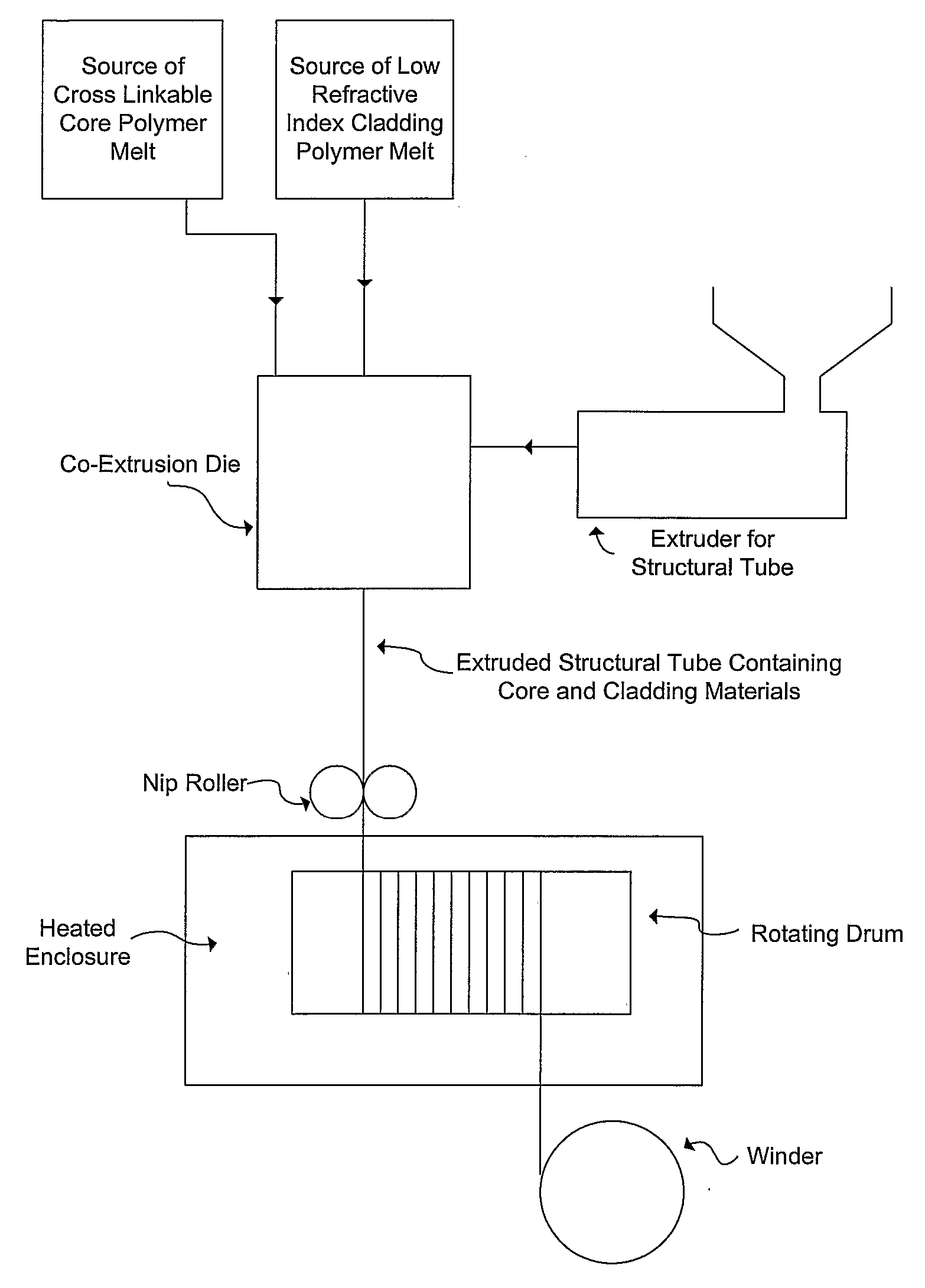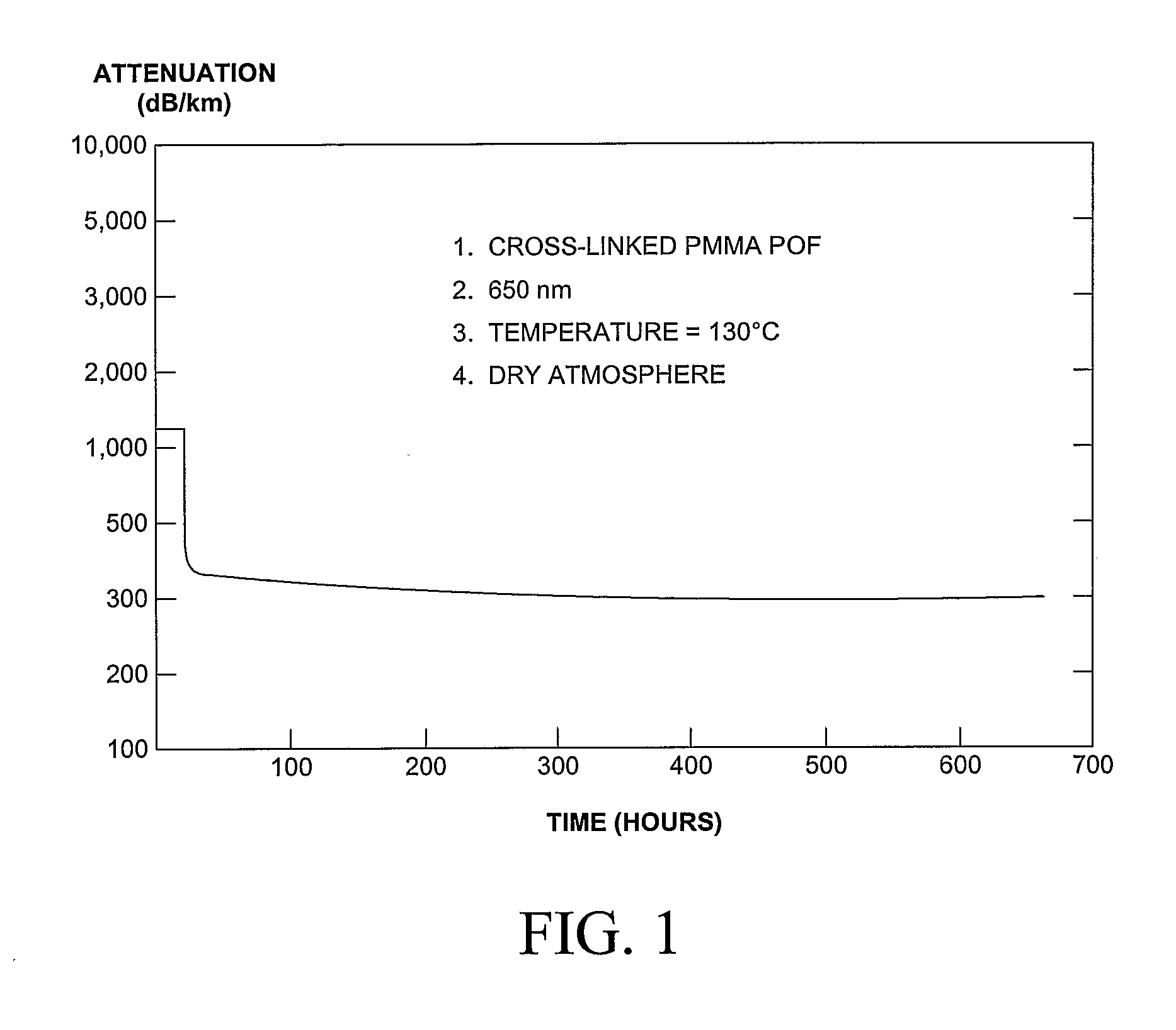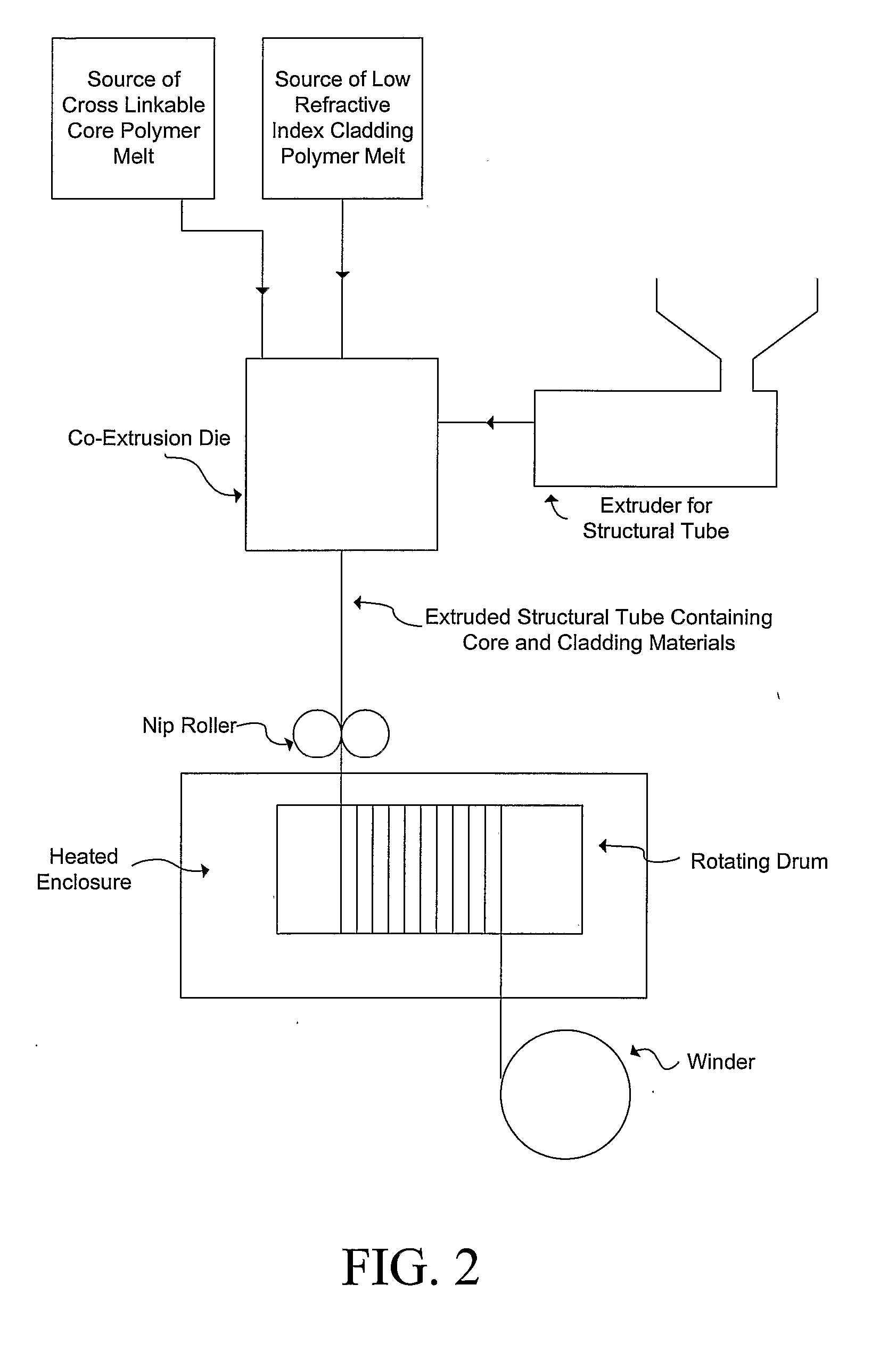Manufacturing Method of Acrylic Optical Fiber with Improved Environmental Stability
a manufacturing method and technology of acrylic optical fiber, applied in the field of manufacturing methods of acrylic optical fiber with improved environmental stability, can solve the problems of inability to meet the requirements of a large number of above requirements, prohibitive commercialization cost of this type of fiber, and unlikely to lead to an economical manufacturing process, etc., to achieve the effect of increasing heat resistan
- Summary
- Abstract
- Description
- Claims
- Application Information
AI Technical Summary
Benefits of technology
Problems solved by technology
Method used
Image
Examples
Embodiment Construction
[0036] The subject invention pertains to a method and apparatus for manufacturing a plastic optical transmission medium. The subject invention also relates to materials for use in producing plastic optical transmission medium. The subject method can allow continuous high-speed production while controlling the refractive index profile, step or graded, of the optical transmission medium. In a specific embodiment, the medium POTM can have high optical transmission, and be able to operate in conditions up to 125° C. at 95% R.H. The POTM can also have mechanical properties which meet the requirements of a specific application.
[0037] By control of the specific choice of POF materials and their chemical processing, together with control of the parameters of a high speed, continuous manufacturing process, a high temperature, high humidity, long lifetime, mechanically stable POF can be produced economically.
[0038] In a specific embodiment of the subject invention, two or more concentric cy...
PUM
| Property | Measurement | Unit |
|---|---|---|
| diameter | aaaaa | aaaaa |
| weight percent | aaaaa | aaaaa |
| temperature | aaaaa | aaaaa |
Abstract
Description
Claims
Application Information
 Login to View More
Login to View More - R&D
- Intellectual Property
- Life Sciences
- Materials
- Tech Scout
- Unparalleled Data Quality
- Higher Quality Content
- 60% Fewer Hallucinations
Browse by: Latest US Patents, China's latest patents, Technical Efficacy Thesaurus, Application Domain, Technology Topic, Popular Technical Reports.
© 2025 PatSnap. All rights reserved.Legal|Privacy policy|Modern Slavery Act Transparency Statement|Sitemap|About US| Contact US: help@patsnap.com



